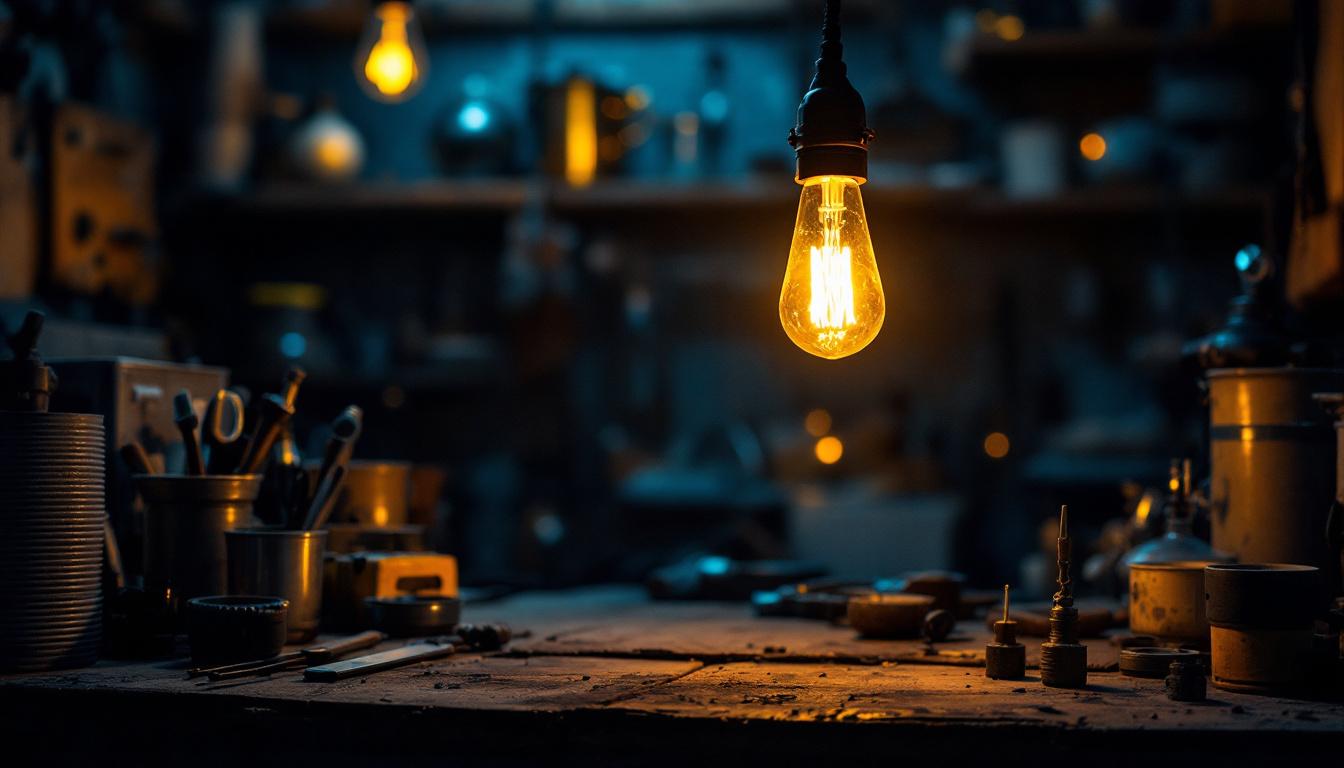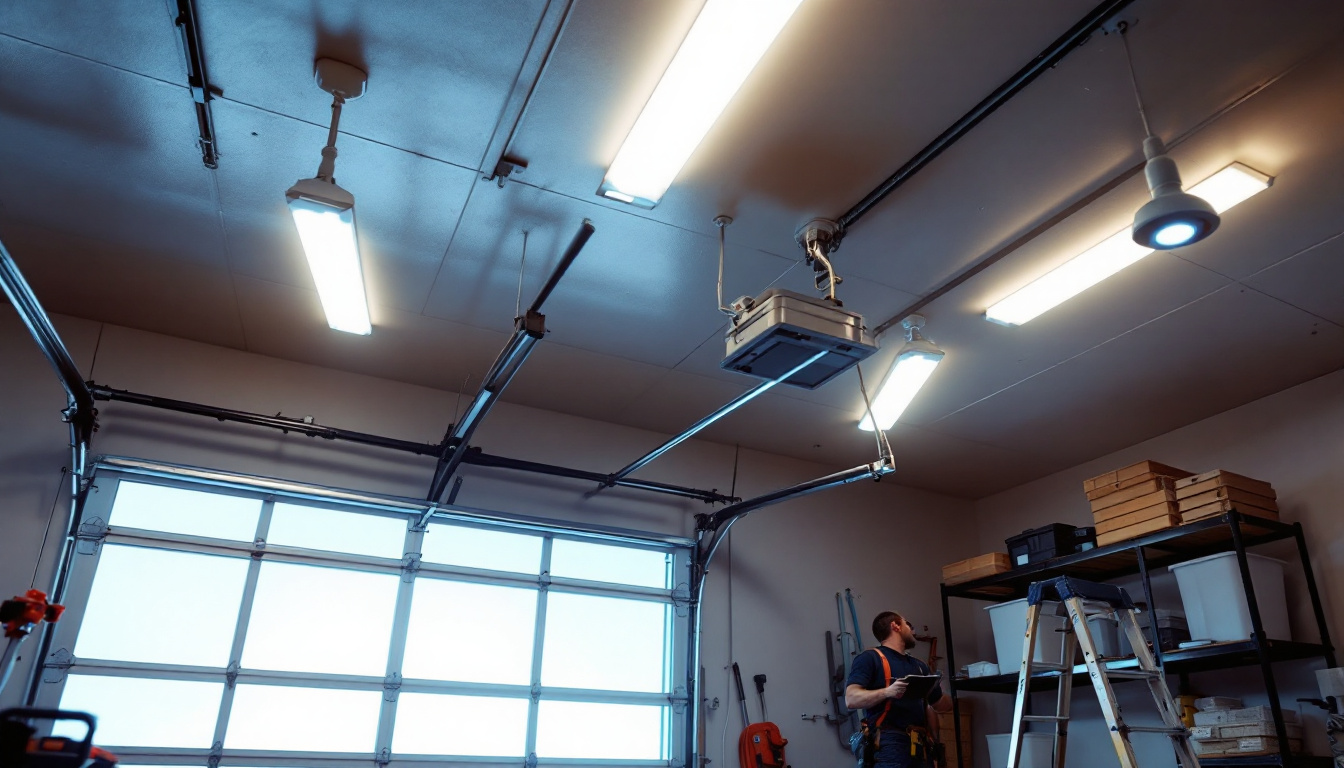
The invention of the light bulb marked a pivotal moment in the history of technology and innovation. For lighting contractors, understanding the origins and evolution of this essential device is not merely a matter of historical interest; it is crucial for grasping the broader context of their work and the advancements in lighting technology. This article delves into the timeline of the light bulb’s invention and explores its significance for professionals in the lighting industry.
Before the advent of the light bulb, various forms of lighting existed, each with its own set of advantages and limitations. From the flickering flames of torches to the soft glow of oil lamps, humanity has always sought ways to illuminate the darkness.
In ancient times, people relied on natural light during the day and used fire-based solutions at night. The earliest forms of lighting included candles made from tallow or beeswax, which provided a modest amount of light but were often inefficient and hazardous. As civilizations advanced, so did their lighting methods. The introduction of gas lamps in the 19th century offered a brighter and more controllable source of light, paving the way for future innovations. These gas lamps were not only used in homes but also illuminated streets, transforming urban landscapes and allowing for extended social activities after sunset.
Additionally, the use of oil lamps, particularly those fueled by whale oil or kerosene, became prevalent in many cultures. These lamps provided a more stable and longer-lasting light source compared to candles, making them a popular choice for households and businesses alike. The design of oil lamps evolved over time, with improvements in wick technology and lamp construction that enhanced their efficiency and safety. This era also saw the emergence of decorative lamps, which served both functional and aesthetic purposes, showcasing intricate designs that reflected the artistic sensibilities of the time.
Despite the advancements in gas lighting, there were still significant drawbacks. Gas lamps required extensive infrastructure and posed safety risks due to the potential for gas leaks and explosions. As urban areas expanded and the demand for reliable lighting grew, the need for a safer and more efficient solution became increasingly apparent. The limitations of gas lighting also highlighted the need for a more portable and versatile lighting option, particularly in rural areas where gas lines were not feasible.
Moreover, the environmental impact of traditional lighting methods began to surface, as the burning of fossil fuels and the harvesting of whale oil raised concerns among early environmentalists. This growing awareness prompted inventors and scientists to seek alternatives that would not only provide illumination but also address the environmental and safety issues associated with existing technologies. The quest for a revolutionary lighting solution ultimately laid the groundwork for the development of the electric light bulb, a breakthrough that would change the world forever.
The invention of the light bulb was not the work of a single individual but rather the culmination of efforts by numerous inventors over several decades. The journey toward the modern electric light bulb involved a series of experiments and innovations that transformed the way people lived and worked.
Among the notable figures in the development of the light bulb were inventors who experimented with various materials and designs. Early attempts included carbon arc lamps, which produced light through an electric arc between two carbon rods. However, these lamps were impractical for everyday use. The breakthrough came when inventors began to explore the use of incandescent materials.
One of the most significant advancements was the discovery that a carbon filament could produce light when an electric current passed through it. This led to the creation of the first practical incandescent light bulb, which was a game-changer for both residential and commercial lighting. The ability to produce a steady and controllable light source opened up new possibilities for illumination.
Another pivotal figure in this narrative was Thomas Edison, who is often credited with the invention of the light bulb, though he built upon the work of others. Edison’s development of a high-resistance carbon filament and his innovative vacuum bulb design greatly enhanced the longevity and efficiency of incandescent bulbs. His establishment of a systematic approach to research and development, including the creation of the first industrial research laboratory, set the stage for future technological advancements and mass production of electric light bulbs.
Once the light bulb was developed, the next challenge was to make it commercially viable. This involved not only refining the design but also creating the necessary electrical infrastructure to support widespread use. As electric power became more accessible, the light bulb quickly gained popularity, revolutionizing the way people illuminated their homes and workplaces.
The transition from gas to electric lighting was not instantaneous. It required significant investment in electrical grids and public awareness campaigns to educate consumers about the benefits of electric lighting. However, once the advantages became clear, the adoption of the light bulb surged, forever altering the landscape of lighting technology.
As cities began to embrace electric lighting, the impact was profound. Streets that were once dimly lit by gas lamps transformed into brightly illuminated thoroughfares, enhancing safety and extending the hours of activity for businesses and social gatherings. This shift not only improved the quality of life but also spurred economic growth, as industries could operate longer hours and urban areas became more vibrant and attractive to residents and visitors alike. The light bulb, therefore, was not just a technological innovation; it was a catalyst for societal change that paved the way for the modern era of electricity and its myriad applications.
The introduction of the light bulb had profound implications for the lighting industry and the role of lighting contractors. As electric lighting became the standard, the demand for skilled professionals who could install and maintain these systems grew exponentially.
With the rise of electric lighting, lighting contractors found themselves at the forefront of a burgeoning industry. The need for residential and commercial installations created a wealth of job opportunities. Contractors were not only responsible for installing light fixtures but also for designing lighting systems that met the specific needs of their clients.
As technology continued to evolve, lighting contractors had to adapt to new products and innovations. The introduction of energy-efficient bulbs, such as compact fluorescent lamps (CFLs) and light-emitting diodes (LEDs), required contractors to stay informed about the latest advancements and best practices in installation and maintenance.
The evolution of lighting technology also brought about changes in regulations and standards. As energy efficiency became a priority for governments and consumers alike, lighting contractors needed to navigate new codes and guidelines. Understanding these regulations is essential for ensuring compliance and providing clients with the most effective lighting solutions.
Innovation has been a driving force in the lighting industry since the invention of the light bulb. As technology continues to advance, lighting contractors must embrace new tools and techniques to remain competitive and meet the evolving demands of their clients.
One of the most significant trends in recent years has been the rise of smart lighting solutions. These systems allow users to control their lighting remotely, adjust brightness levels, and even change colors through mobile applications or voice commands. For lighting contractors, this represents both a challenge and an opportunity.
Contractors must familiarize themselves with smart technology and understand how to integrate it into existing lighting systems. This requires ongoing education and training to ensure that they can provide clients with the latest innovations in lighting control.
As concerns about environmental sustainability grow, energy efficiency has become a top priority for both consumers and businesses. Lighting contractors play a crucial role in helping clients transition to energy-efficient solutions that reduce their carbon footprint and lower energy costs. This includes not only the installation of energy-efficient bulbs but also the design of lighting systems that maximize efficiency and minimize waste.
The future of lighting is bright, with ongoing advancements in technology promising to reshape the industry once again. For lighting contractors, staying ahead of these trends is essential for maintaining relevance and providing value to clients.
As new technologies emerge, such as organic light-emitting diodes (OLEDs) and advancements in solar lighting, contractors must be prepared to adapt. These innovations offer exciting possibilities for energy savings and design flexibility, but they also require contractors to expand their knowledge and skills.
Furthermore, the integration of artificial intelligence (AI) into lighting systems is on the horizon. AI can enhance energy efficiency by optimizing lighting based on occupancy patterns and natural light availability. Contractors who understand how to implement and maintain these systems will be well-positioned for future success.
As the lighting landscape evolves, educating clients about new technologies and their benefits will be increasingly important. Lighting contractors must take on the role of consultants, guiding clients through the selection of lighting solutions that best meet their needs. This involves not only technical knowledge but also effective communication skills to convey complex information in an accessible manner.
The invention of the light bulb was a transformative event that laid the foundation for modern lighting. For lighting contractors, understanding this history is vital for appreciating the advancements that have shaped the industry and the opportunities that lie ahead. As technology continues to evolve, the role of lighting contractors will remain crucial in providing innovative, efficient, and sustainable lighting solutions.
By embracing change and staying informed about emerging trends, lighting contractors can ensure their relevance in a rapidly evolving market. The legacy of the light bulb is not just a story of invention; it is a testament to the ongoing pursuit of innovation and excellence in the lighting industry.
As you continue to innovate and adapt in the ever-changing landscape of lighting technology, partner with LumenWholesale to ensure your projects shine. Our commitment to providing contractors with superior, spec-grade lighting products at wholesale prices means you can trust in the quality and value of every purchase. With free shipping on bulk orders, you’ll find that our extensive selection not only meets but exceeds industry standards. Don’t let inflated markups dim your potential—choose LumenWholesale for a seamless blend of quality, affordability, and convenience. Elevate your lighting solutions today by visiting Wholesale Lighting at the Best Value.

Discover how LED wall pack fixtures are revolutionizing the lighting industry with their energy efficiency, durability, and versatile applications.

Discover how choosing the right garage ceiling light can streamline operations for lighting contractors, saving both time and money.

Discover the future of office lighting with our comprehensive guide on the best lighting options.

Discover the often-overlooked aspects of light fan installations that even seasoned lighting contractors miss.